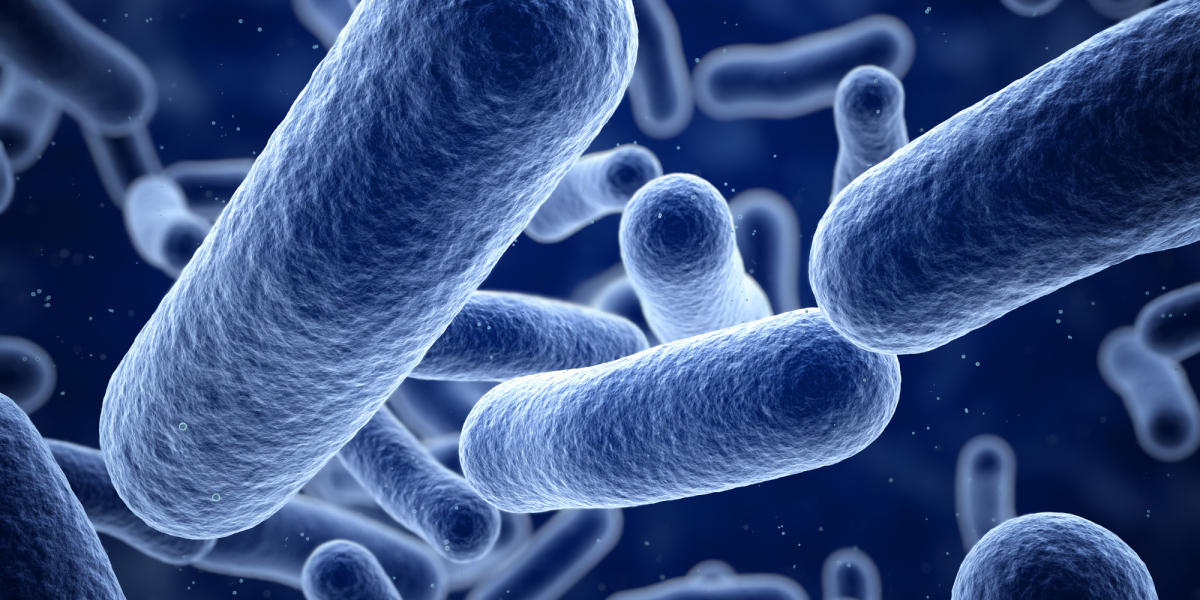Bacterial infections are illnesses caused by pathogenic bacteria invading and multiplying in a host (human or animal). Understanding how bacterial infections spread is crucial to preventing epidemics, controlling hospital-acquired infections, and designing effective public health responses. In many cases, antibiotic therapies (for example, a ceftriaxone injection) are used once an infection is diagnosed. In the pharmaceutical supply chain, ceftriaxone injection distributors play a role in ensuring that such essential antibiotics are available where needed. But preventing spread in the first place is often the best strategy.
This essay first reviews the biological and epidemiological mechanisms by which bacterial infections transmit between hosts (or from environmental reservoirs to hosts). After that, a brief note is given about the role of antibiotic distribution and how the supply chain (including ceftriaxone injection distributors) intersects with infection control.
Mechanisms and Routes of Bacterial Transmission
Bacterial pathogens may spread through various routes. The classic epidemiologic framework considers sources or reservoirs, modes of transmission, and susceptible hosts. The major modes include: direct contact, indirect contact, droplet/airborne, vehicle (contaminated water/food/inanimate objects), and vector transmission.
Below are details of each route, with examples, and factors affecting transmission.
Direct Contact Transmission
Direct contact means physical transfer of bacteria from an infected or colonized individual (or their secretions) to another person. This may include:
Skin-to-skin contact
If a person has a skin infection (for example, impetigo, cellulitis, or MRSA colonization), touching or close contact can transmit bacteria.Contact with mucous membranes or body fluids
Bacteria can transfer via saliva, pus, or other secretions. For example, streptococci causing strep throat may spread when an infected person coughs or touches another person and transfers secretions.Sexual contact or vertical (mother-to-child) transmission
Some sexually transmitted bacterial infections (e.g. Neisseria gonorrhoeae, Chlamydia) spread via intimate contact. Bacteria may also transmit from a pregnant person to the fetus across the placenta or during delivery.
This route is often short-range and requires relatively close or direct physical contact.
Indirect Contact Transmission
Indirect contact involves an intermediate object or surface (a “fomite”) through which bacteria pass before reaching a new host. Some forms:
Contaminated surfaces and objects
Pathogens may survive for varying durations on objects (e.g. doorknobs, utensils, medical instruments). When someone touches that surface and then touches their mouth, nose, eyes, or an open wound, transmission may occur.Medical devices and invasive procedures
Needlestick injuries, catheter use, ventilators, or improperly sterilized surgical equipment may facilitate direct entry of bacteria into tissue or bloodstream (parenteral transmission).Contaminated hands (hand-to-hand, hand-to-surface-to-hand)
The hands are an extremely common vehicle for indirect spread: for instance, an infected person touching their nose and then touching a door handle, which is touched by another person who later touches their face.
Indirect contact is often a major driver in healthcare-associated infections and community spread.
Droplet and Airborne Transmission
These routes involve bacteria traveling through the air in droplets or aerosols.
Droplet spread
When an infected person coughs, sneezes, speaks, or exhales, they may emit droplets (usually >5 micrometers) that carry bacteria. These droplets tend to fall within short distances (typically <1–2 meters). A susceptible person can inhale them or have them land on mucous membranes. Examples include Neisseria meningitidis, Streptococcus pneumoniae, Bordetella pertussis.Airborne (aerosol) transmission
In this case, smaller particles or droplet nuclei (<5 micrometers) remain suspended in air for longer periods and travel longer distances. This is less common for bacteria than for viruses, but Mycobacterium tuberculosis is a classical example.
The boundary between droplet and aerosol is a continuum certain pathogens may use mixed modes.
Vehicle Transmission (Water, Food, Airborne Particles)
“Vehicleborne” transmission means using nonliving materials or substances that carry bacteria from source to host.
Contaminated water or food
Many bacterial infections spread via ingestion of contaminated water or food. Examples: Salmonella, Escherichia coli, Vibrio cholerae, Shigella.Airborne dust or particulates
Bacteria in dust (soil, aerosolized particles) may be inhaled, causing respiratory infection (e.g., Legionella in aerosolized water droplets).
Vehicle transmission allows pathogens to cross long distances and infect many people.
Vector Transmission
Vectors are living organisms (often insects, arthropods) that carry bacteria from one host (or reservoir) to another. There are two main types:
Mechanical vector transmission
The vector carries the bacteria on its body surfaces (without internal multiplication). For example, a fly may pick up Shigella from feces and transfer it to food.Biological vector transmission
The vector becomes infected itself, and the bacteria multiply or develop within the vector before transmission. Then the vector bites the human host, injecting the bacteria (e.g. ticks transmitting Borrelia in Lyme disease).
Vector transmission allows bridging between animal reservoirs and humans.
Factors Influencing Spread
It is not enough that bacteria have a pathway; for infection to occur, other conditions must align. These factors modulate whether spread is efficient, or becomes an outbreak.
Reservoirs and Carriers
Bacteria must persist in reservoirs (humans, animals, soil, water) until a new host is exposed.
Some individuals may be asymptomatic carriers who harbor bacteria and spread them without showing disease.
Chronic or convalescent carriers may spread for extended periods.
Infectious Dose & Virulence
The minimum number of bacteria required to establish infection (infectious dose) varies by species. Some require few organisms; others need many.
Virulence factors (e.g. toxins, adhesion molecules, immune evasion) determine how effectively bacteria colonize, damage host tissues, or avoid immune defenses.
Some bacteria invade host cells and spread laterally from cell to cell, evading extracellular immune responses.
Host Susceptibility
The immune status of the host is crucial. Immunocompromised persons are more vulnerable.
Integrity of physical barriers (skin, mucous membranes) matters; any break (wound, ulcer) increases vulnerability.
Co-morbidities (diabetes, malnutrition, HIV, chronic diseases) increase risk.
Age (very young or old) is also a risk factor.
Environmental Conditions & Behavior
Overcrowding, poor ventilation, lack of sanitation, and contaminated water sources favor spread.
Hygiene behaviors (hand washing, sanitation, food handling) strongly influence transmission.
In health care settings, poor sterilization or lapses in infection control can amplify transmission (nosocomial infections).
Antibiotic misuse can drive resistant strains, making infections harder to treat and easier to sustain within communities.
Chain of Infection
Epidemiology often describes a chain of infection: pathogen → reservoir → portal of exit → mode of transmission → portal of entry → susceptible host. Disrupting any link (e.g. cleaning surfaces, isolating cases, sterilizing instruments) helps break transmission.
Examples Illustrating Spread
Tuberculosis: Mycobacterium tuberculosis spreads via airborne droplet nuclei from coughs or sneezes; a single individual can infect many in poorly ventilated settings.
Typhoid fever: Salmonella Typhi spreads by ingestion of contaminated food or water (vehicle).
Strep throat: Streptococcus pyogenes spreads by droplets or direct contact.
Healthcare-associated MRSA: via contaminated surfaces, hands, devices in hospitals (indirect contact).
Lyme disease: Borrelia burgdorferi spread via tick vector (biological).
Cholera: Vibrio cholerae spreads by ingesting contaminated water (vehicle).
Role of Antibiotics and the Supply Chain Including Ceftriaxone Injection Distributors
While interrupting transmission is primary, antibiotic therapy is vital once infection occurs. Ceftriaxone is a broad-spectrum cephalosporin used in severe bacterial infections (e.g. sepsis, meningitis, gonorrhea, pneumonia) and often given as an injection (intravenous or intramuscular).
However, antibiotic therapy alone cannot prevent spread; multiple aspects interact:
Availability: Having ceftriaxone injection distributors ensures that healthcare facilities have access to antibiotics when needed. Delayed or inconsistent supply can worsen disease outcomes or permit further spread.
Appropriate use: Overuse or misuse of ceftriaxone (or any antibiotic) fosters antimicrobial resistance (AMR), making future infections less responsive to treatment. The WHO warns that many bacterial infections are becoming resistant to standard treatments.
Quality control: Distributors must maintain cold chain, avoid degradation, and ensure authentic product to avoid subtherapeutic dosing, which can select resistant strains.
Surveillance & stewardship: Supply chains must work with healthcare providers to monitor antibiotic use, resistance patterns, and ensure that potent antibiotics like ceftriaxone are reserved when they are really needed.
Equitable distribution: In many regions, access to essential antibiotics is uneven. Ceftriaxone injection distributors play a role in whether remote or under-resourced hospitals receive their supplies timely.
Thus, while transmission prevention is cornerstone, the antibiotic supply chain (including distributors of ceftriaxone injections) is integral to treatment, containment, and limiting onward spread of drug-resistant bacteria.
Summary & Conclusion
Bacterial infections spread via multiple routes: direct contact, indirect contact, droplets, airborne aerosol, contaminated vehicles (food, water, objects), and vectors. The efficiency of spread depends on bacterial virulence, dose, host susceptibility, and environmental or behavioral factors. Interrupting any link in the chain of infection via hygiene, isolation, sterilization, vaccination or sanitation helps reduce transmission.
When infections do occur, effective antibiotic therapy is needed. In that context, having a robust supply chain including ceftriaxone injection distributors ensures that frontline medical facilities can access life-saving drugs. But this must go hand in hand with judicious antibiotic use and strong infection control measures to prevent the emergence and spread of resistant bacteria.














